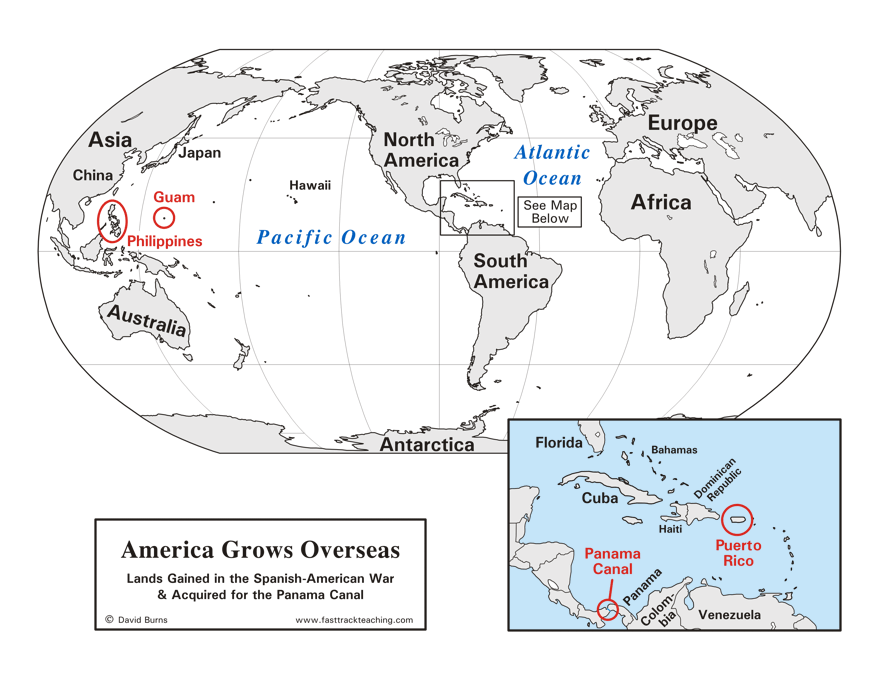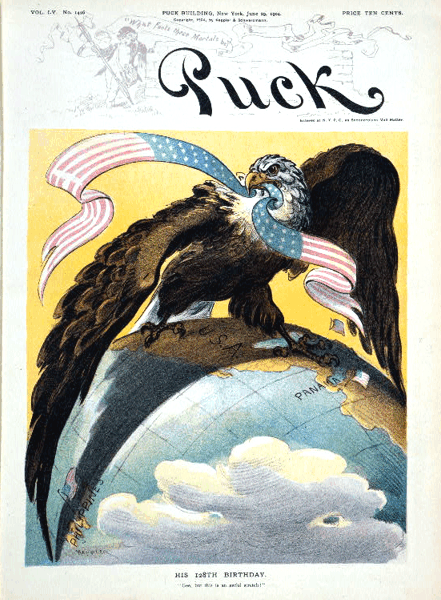
|
President McKinley made the decision to keep the Philippines President William McKinley said that if the U.S. gave the Philippines immediate independence, some other nation would probably attack the islands and take control. He ordered U.S. Army units to stay in the Philippines even after the Spanish American war ended. He said the islands would be kept as a U.S. territory until they were ready for independence. McKinley also said the U.S. would help the Philippines by building modern railroads, hospitals, and schools to improve life for the Filipino people. Of course, keeping the Philippines helped America also, especially for business and trade in that part of the world. |
|
Some Filipinos fought for immediate independence Some Filipinos were angry about the decision of the U.S. to keep control of the Philippines. Some groups on the islands even began fighting against the American soldiers. They hoped this would force the U.S. to give the Philippines immediate independence. The fighting between American soldiers and the Filipino independence groups continued for several years. It was often very bloody and brutal on both sides. The photo shows a prison in the Philippines in 1901. The men being held inside were some of the Filipinos fighting against the U.S. The fighting ended the following year. |
 |
|
Americans were divided on the decision The photo on the right shows the American flag flying over Manila, the capital of the Philippines, in 1901. Many Americans thought it was a grand sight - a sign of growing U.S. power and influence in the world. It was just good judgment to keep control of the Philippines, they said. It would help the Filipino people, and also help America increase its trade with that part of the world. Other Americans, however, considered the situation in the Philippines a clear example of imperialism by the U.S. They said the U.S. should get out, and let the Filipinos set up their own government. |
|
Americans
did help the Philippines
As President McKinley promised, Americans did work to improve life for the Filipino people. For example, Americans built schools and hospitals, installed telephone lines, and helped in many other ways. Americans also helped the islands move toward a system of elected government officials. The Philippines were given full independence in 1946. The photo shows a parade by a U.S. Army unit in a city in the Philippines in 1916. |

| A stretch
for
the American Eagle The drawing on the cover of this magazine from 1904 suggests that many Americans were uneasy about the idea of the U.S. controlling foreign lands, regardless of the reasons. The American flags on the globe show the Philippines, Puerto Rico, and also the land in Panama where the U.S. was starting to build the famous canal. Most Americans at that time were proud of the new role America was taking in the world. Many others, however, probably agreed with the caption on this drawing. It is the Fourth of July, and America's symbolic eagle is saying, "Gee, but this is an awful stretch!" Was it imperialism? Most people did not want to call it that. But America's stretch across the globe clearly had many Americans concerned. |
 |
All images except the map are from the Library of Congress.
The map is by David Burns.
Some images have been edited or resized for this page.
|
Copyright Notice
Copyright 2009, 2017 by David Burns. All rights reserved. As a guide to the Virginia Standards of Learning, some pages necessarily include phrases or sentences from that document, which is available online from the Virginia Department of Education. The author's copyright extends to the original text and graphics, unique design and layout, and related material. |